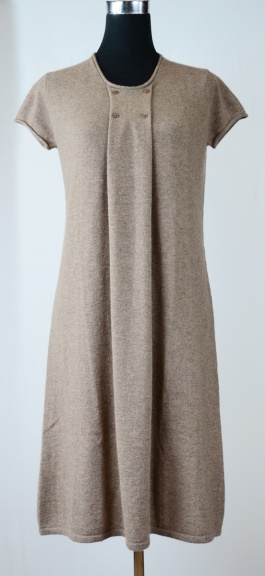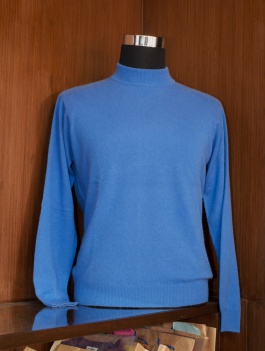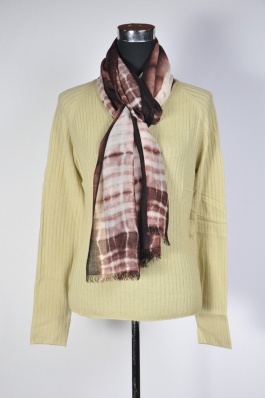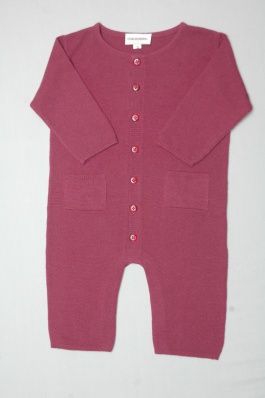Nepal is not only known for its natural beauty and world heritage sites, but its popular for the arts and crafts of the Nepalese people. One of the most popular crafts from Nepal is Cashmere. Cashmere has been manufactured in Nepal since ancient period and we have been part of this tradition since the late 80s.
Cashmere making process is intense and involves a series of steps. Cashmere can either be weaved into blanket, shawl, scarf or it can knitted into cardigan, sweater, hats and accessories.
Weaving Process: Even though the weaving process involves a number of step, it can broadly be categorized into following six parts.
Wool Collection: Cashmere wool is a fiber obtained from cashmere goats. common usage defines the fiber as a wool but in fact it is a hair, and this is what gives it its unique characteristics as compared to sheep's wool. Cashmere fiber is collected during the spring season when the goats naturally shed their winter coat. The fiber is then de-haired by a mechanical process that separates the coarse hairs from the fine hair.
Spinning: The finished fiber is then spun by hand into yarn. However, hand-spinning is an extremely painstaking task. It requires immense patience and dedication. With the advancement in technology, the spinning process is now done by machine and as a result the cashmere yarn is much finer and uniform.
Weaving: Weaving is a method of fabric production in which two distinct sets of yarn or threads are interlaced
at right angles to form a fabric cloth. the longitudinal thread are called the warp and the lateral threads are called the weft. The way the warp and filling threads interlace with each other is called the weave. The warp is usually silk and cashmere is used as the filling yarn. 100% cashmerea have both warp and filling is cashmere. Weaving can be summarized as a repetition of these three actions. Shedding: where the ends are separated by raising or lowering heddles to form a clear space where the weft can pass. Passing: where the weft is propelled across the loom by hand, an air-jet, a rapier or shuttle. Beating-up: where the weft is pushed up against the fell of the cloth by the reed.
Mending: Although great care is taken at all stages of cashmere production some faults do occur which are mended at this stage. The cloth is examined and any faults located are marked with yellow thread. It is the darner's job to mend any faults by hand. A task requiring great skill and patience.
Washing:Washing is a crucial stage and is performed with great care in formulated soap in soft water at temperatures that are carefully controlled. The soap has a scouring agent in it which acts as a detergent; chemically removing oil that is in the yarn. On first rinsing, the oil is removed along with the loose dye and any loose fibre in the wash. Secondly, fresh warm water and soap are used to start milling the cashmere pieces to get them rubbing together; by doing this, tightly twisted fibres in the yarn begin to open up and expand, which once carefully dried, allows the cashmere piece to have the gorgeous feel, or ‘handle’ that is craved.
However, it is very easy to overmill cashmere, which will in turn make it appear matted and felted. Once this has occurred there is no recovery process for this, and the pieces will need to be scrapped.
Note that well-made cashmere products should feel soft, and this should get better and softer as the piece is worn and washed. Make sure it is not too soft in the shops, as it will simply pill and deteriorate rapidly. A good test is to hold a cashmere product up and look along the surface horizontally at eye-level. If you can see about 1mm of fuzz on the surface then the product will last long; anymore and it will pill with very little wear.
The natural color of cashmere is ivory. If we do not need any color is the cashmere, the product can be sent for finishing if not it is dyed to desired color.
Dyeing: The dyeing process is a delicate one as dyeing cashmere can harden the fiber if it is
not done properly. Whilst making sure not to harden the fiber, it has to be dyed a full, deep, and level color. The color has to be ‘fast’, so that it doesn’t fade in sunlight, run or ‘bleed’ in the rain, and isn’t affected by the perspiration of our bodies. Dyeing is done by hand. Dyers with immense patience and generations of experience are the one who dye the cashmere products as even the smallest negligence reflects on the quality of the product.
Finishing: After washing or dyeing, there are still processes remaining. Scarves will need to be pressed and undergo a final inspection before tabbing, folding, and bagging. The two loose end of the scarf are twisted by hands to make fringes. After the fringes are made, it is ironed, labeled and packed into the bag.





